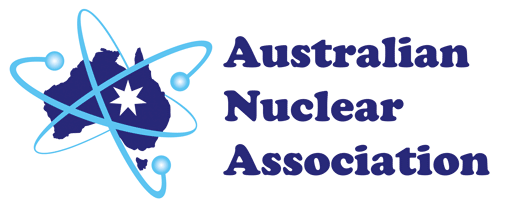Questions and Answers on Cost and Bans
Question: Is nuclear energy going to be too expensive for Australia?
Answer: Until the ban is lifted and vendors do full costing for Australia, we will not know the real cost of nuclear energy in Australia. Overseas experience shows that the cost of constructing nuclear power plants is reasonable when a proven design already built and licensed elsewhere is selected and several plants of the same design are built at the same location.
CSIRO in its GenCost 2024-25 draft report which has been released for consultation, estimated the capital cost of large scale nuclear in Australia to about $9,000 per kilowatt[1]. This cost estimate is based on the cost of recently built nuclear power plants in South Korea with costs adjusted to Australian conditions.
There are clear ways to ensure that nuclear power is cost-effective:
-
- Standardised designs: Instead of expensive, first-of-a-kind projects, Australia could opt for reactors that have already been successfully built and operated.
- Sequencing reactor construction: Building the same reactor design multiple times in a row lowers costs through efficiency and economies of scale.
- Pre-approved designs: Instead of starting from scratch, Australia could license designs that have already passed strict international safety approvals.
The problem isn’t nuclear itself, but how nuclear projects are managed. If done properly, nuclear power plants provide a stable, long-term investment that delivers clean electricity for generations.
Question: Is there a point in removing the ban on nuclear energy if it’s too expensive for us anyway?
Answer: Cost is not a reason to ban nuclear
Banning nuclear power does nothing to reduce energy costs. The argument that nuclear is too expensive is misleading for a simple reason: costs vary widely depending on how a project is managed.
Some nuclear plants have been over budget and delayed (such as recently completed projects in the USA, UK, and France), but those same countries are still moving forward with new nuclear plans. If nuclear power were truly unaffordable, these nations wouldn’t be building more nuclear.
Meanwhile, countries that have streamlined their construction processes (like China, South Korea, and the UAE) have shown that nuclear power can be built affordably. The UAE’s Barakah nuclear plant was constructed on time and within budget, bringing four gigawatts of clean power to the grid.[2]
South Korea has one of the lowest nuclear construction costs in the world[3], thanks to its approach of building standardised, identical reactors in sequence.
Australia could do the same: if we allow nuclear to be considered, we can select a reactor design that has already been built and licensed overseas, keeping costs predictable and avoiding unnecessary delays.
The ban on nuclear energy only serves to prevent cost-effective, market-driven solutions from emerging. Lifting the ban would allow real-world proposals to be assessed, ensuring that Australians get the best, most affordable path to decarbonisation.
If nuclear really is too expensive, it won’t be built, but keeping the ban in place denies Australia the chance to find out.
Question: Why spend money on nuclear power if we have wind and solar power in spades?
Answer: A system that includes a power source when the sun doesn’t shine and the wind doesn’t blow is overall cheaper than one that needs backup.
People often don’t consider capacity factors, but they are a key measure of how much electricity a power source actually generates.
The US nuclear fleet in 2022 operated at 93% capacity factor,[4] meaning its plants generated electricity almost all the time. On average worldwide for all reactors from their commercial operation to 2023 ran at an average global capacity factor of about 80%.[5]
By contrast, wind and solar have much lower capacity factors – 32% for wind and 23% for large scale solar on average for Australia[6]– which means they require expensive backup systems and additional transmission infrastructure.
While wind and solar are cheap to install, their intermittency drives up system costs because they need storage or gas backup to ensure grid reliability. The OECD has warned that excluding nuclear from the energy mix creates extra costs to society, since a balanced grid benefits from having a diversity of energy sources.[7] If Australia wants an affordable, low-carbon grid, nuclear should be part of the mix.
Question: Will Australia be able to afford to go into serious debt to pay for nuclear power plants?
Answer: Investment in nuclear energy keeps money in the country and pays dividends for centuries after it is built. The cost of nuclear power plants will be recovered from the reliable electricity provided to the grid
Beyond affordability, nuclear power drives economic growth by creating high-quality jobs and fostering industrial development.
Some recent examples:
- Hinkley Point C (UK): £5.3 billion has been spent directly with businesses across the region, boosting local economies and training 1,300 apprentices so far.[8]
- Davis-Besse Nuclear Power Station (USA): Generates $805 million in annual economic output and contributes $400–500 million to local communities every year through wages and operational spending.[9]
- France’s nuclear exports: France earns €3 billion annually by exporting nuclear-generated electricity to neighbouring countries.[10]
- South Korea’s success in nuclear exports: A $20 billion deal with the UAE to build and operate nuclear reactors shows that a strong nuclear sector can create lucrative international partnerships[11].
If Australia develops a nuclear energy industry, the economic returns will stay within the country – funding local businesses, training engineers, and fostering technological expertise.
23 March 2025
[1] https://www.csiro.au/en/news/all/news/2024/december/gencost-2024-25-draft-report-released-for-consultation
[2] https://en.wikipedia.org/wiki/Barakah_nuclear_power_plant
[3] https://www.ft.com/content/85a7e313-6089-4ba9-8f5b-f45adcbc5074
[4] https://www.eia.gov/energyexplained/nuclear/us-nuclear-industry.php
[5] https://pris.iaea.org/PRIS/WorldStatistics/LifeTimeUnitCapabilityFactor.aspx
[6] https://aemo.com.au/-/media/files/stakeholder_consultation/consultations/nem-consultations/2023/2024-forecasting-assumptions-update-consultation-page/gencost-submissions/angus-mcfarlane.pdf?la=en
[7] https://www.oecd-nea.org/jcms/pl_15000/the-costs-of-decarbonisation-system-costs-with-high-shares-of-nuclear-and-renewables
[8] https://www.edfenergy.com/media-centre/new-skills-better-jobs-report-reveals-positive-impact-hinkley-point-c
[9] https://www.nei.org/CorporateSite/media/filefolder/resources/reports-and-briefs/economic-benefits-davis-besse-nuclear-201501.pdf
[10] https://world-nuclear.org/information-library/country-profiles/countries-a-f/france
[11] https://www.reuters.com/article/world/us/skorea-says-wins-20-bln-nuclear-deal-from-uae-idUSSGE5BQ00F /

